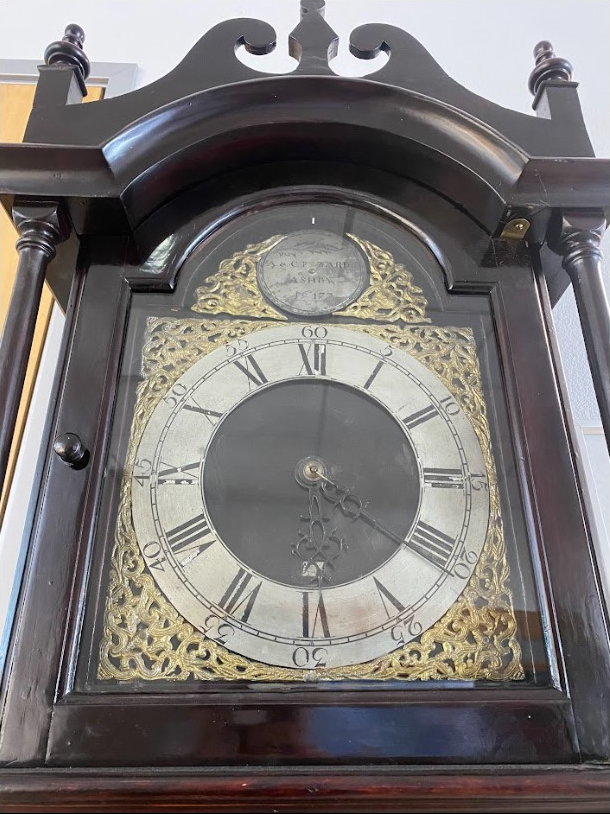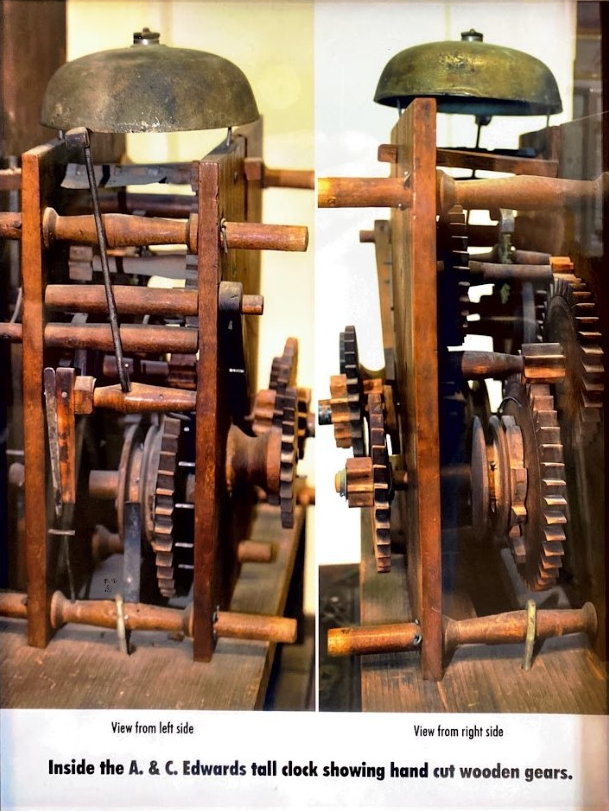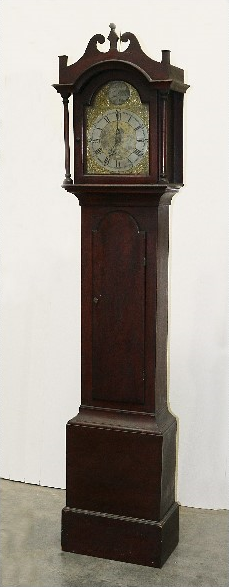This tall clock was built by Abraham and Calvin Edwards in Ashby, Massachusetts circa 1793-1794. Abraham and his younger brother Calvin were both sons of Samuel Edwards and Huldah Easterbrook or Concord, MA. The brothers entered into a partnership in 1792 to make wooden gear clocks. The partnership lasted about four years before Calvin’s death at the age of 33. During these four years the pair produced about 530 clocks. After Calvin’s death, the clocks were signed by Abraham only. Early clocks like this one (which was the 177th clock made by the Edwards), were made with a composite metal face. This was often done using stamped gold colored pewter spandrels made to look like castings. Later clocks made after about #211 had faces that were made from wood and hand painted.
As far as the construction, the wood tall case was made from pine and stained dark to look like mahogany. The finish is original. The wooden works are a 30-hour movement with a count-wheel strike system, recoil escapement, and powered by two weights. Materials included maple plates, arbors, and pinions with cherry wheels (gears). The face features a date aperture and the original hour and minute hands. The original weights, chains, and pendulum are present . Unfortunately, the clock is missing two wooden or brass balls that would originally sit atop the chimney finial plinths. An engraved brass plate inside the case indicates the clock was repaired December 20, 1959 by watchmaker Dale L. Harker at King Jewelers in Chula Vista, CA.
This antique clock was transported from Massachusetts to California in the 1800s by a family moving to San Diego. They hauled all their belongings, including the clock, in a covered wagon. It was eventually given to their longtime neighbors, the Chaffee family, in about 1953. The clock was apparently still in running condition until about 1965. John Clarence Patric Chaffee passed it on to his daughter, Jacqueline (Chaffee) Hoefert, who donated the historically rich clock to the Miniature Engineering Craftsmanship Museum. Jackie has also donated some of her miniature dollhouse work for display, which can be found near the heirloom clock.



